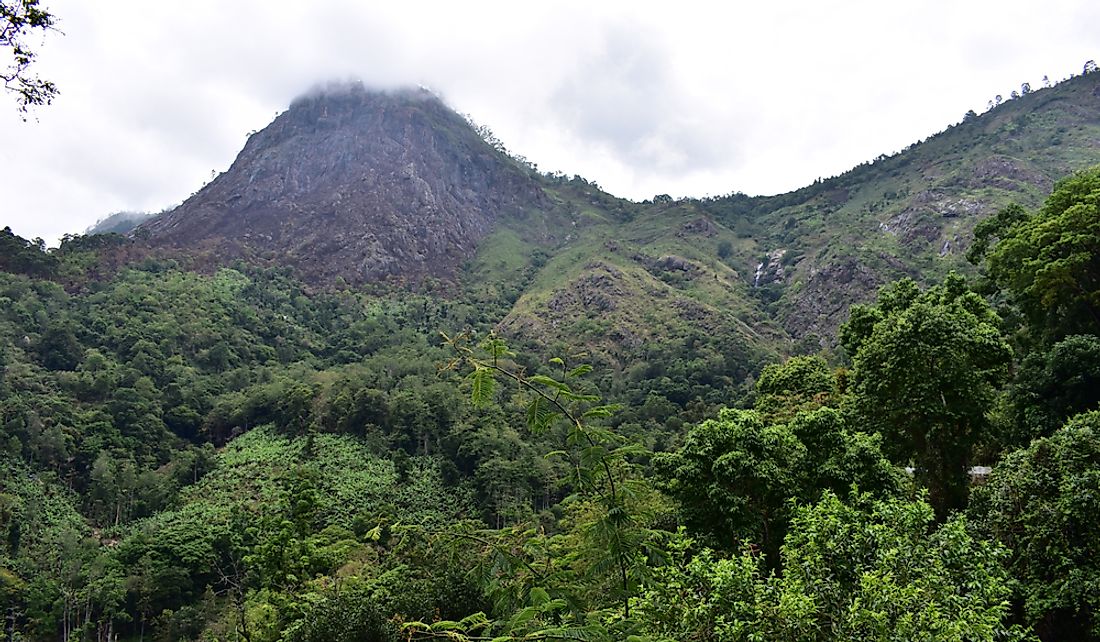Where Are The Eastern Ghats?

The Eastern Ghats are a mountain range located on the eastern coast of India. The chain of mountains, which are discontinuous, extends across three Indian states, beginning in northern Odisha, passing through Andhra Pradesh, and ending in Tamil Nadu in the south. A number of major rivers flow through the mountain range, including the Krishna River, Godavari River, Kaveri, and Mahanadi. The Eastern Ghats is bordered by the Deccan Plateau to the west, while the Bay of Bengal runs parallel to the mountain range.
Geology
Geologically, the Eastern Ghats are older and more complex than the Western Ghats, which is a mountain range located along the western coast of the Indian peninsula. The geological history of the Eastern Ghats is linked to the breakup of the Rodinia supercontinent and the formation of the Gondwana supercontinent. The range is composed of various type of rock, including khondalites, charnokites, metamorphic gneiss, granite gneiss, and quartzite. Iron ore, limestone, and bauxite can also be found in the range. In terms of its structure, the Eastern Ghats has strike-slip faults and thrusts along its ranges. The Eparchaean Unconformity is the main discontinuity of the Eastern Ghats, which is situated in the Tirumala Hills and occurred due to extensive erosion along the hill.
Hill Ranges
The Eastern Ghats is made up of hill ranges, including the low Karanthmalai and Sirumalai Hills, which are situated in the southernmost part of the range, south of Tamil Nadu. In the northern part of Tamil Nadu, the hill ranges include the Kalrayan Hills, Kollimalai, Chitteri, Pacahaimalai, Shevaroy, Mettur, Palamalai, and Javadhu Hills. These hills are higher in altitude and experience a cool and wet climate. This climate is favorable for certain types of agriculture, such as coffee.
The town of Yercaud, also referred to as a hill station, is located in the Shevaroy Hills, while the Bilgiringa Hills contains a forested region that is home to a large elephant population. In the state of Andhra Pradesh, the Eastern Ghats consists of the Velikonda and Palikonda-Lankamalla-Nallamalai Ranges. The Palnadu basin marks the northern boundary of the Eastern Ghats, while the range merges with the Tirupati Hills in the south.
The Tirumala Hills are located within the Seshachalam-Velikonda Range. The Palar River passes through the area, while the Kondapalli Hills are situated between the Godavari River and Krishna River. Other hills in the range include Madhurawada Dome and the Madugula Konda Range.
Drainage
The Eastern Ghats is a source of many rivers. Additionally, large rivers originating from other regions also pass through the range. Some of the rivers that originate in the Eastern Ghats include the Palar River, Sabari River, Rushikulya River, Champavathi River, Sileru River, Gosthani River, and Vellar River. Rivers that originate elsewhere but flow through the Eastern Ghats include the Godavari River, Mahanadi, Kaveri, and Tungabhadra River.
Flora and Fauna
The Eastern Ghats is home to various species of plants and animals. Common tree species that grow within the range include Meliosma microcarpa, Cinnamomum zeylanicum, and Elaeocarpus serratus. The Eastern Ghats is also inhabited by various reptiles, mammals, birds, and amphibians. Examples of mammals that live within the range include the Indian elephant, Asian palm civet, small Indian civet, and Indian crested porcupine. Bird species known to live in the Eastern Ghats include the spot-billed pelican, great Indian bustard, and pied crested cuckoo. Examples of amphibians include the cricket frog, Gunther’s toad, and golden-backed frog. Common reptile species include the Indian flap shell turtle, mugger crocodile, and Indian chameleon.
Protected Sites
Due to the variety of animals and plants within the region, the government has established protected areas within the Eastern Ghats. These sanctuaries and national parks play an important role in preserving and protecting various species from extinction. Examples of sanctuaries and national parks include Coringa Wildlife Sanctuary, Lakhari Valley Wild Life Sanctuary, Kambalakonda Wildlife Sanctuary, and Papikonda Wildlife Sanctuary.











